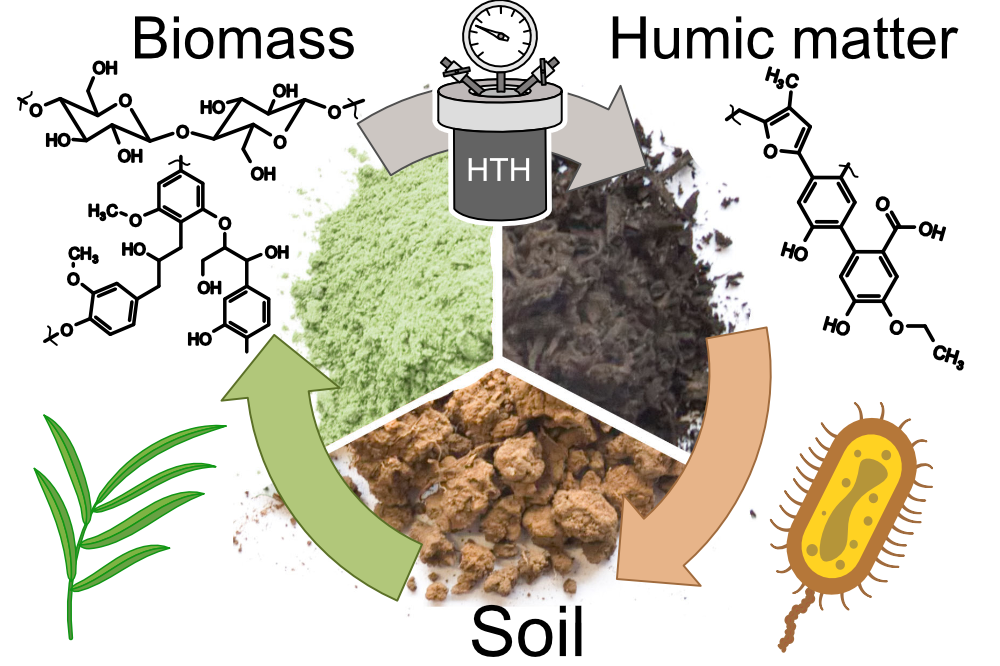Chemistry of artificial humic substances

Soil degradation caused by over-fertilisation and deforestation represents a significant threat to agricultural production and ecological balance. Globally, two billion hectares of arable land are affected by moderate to severe degradation, resulting in lower crop yields, loss of biodiversity and reduced carbon sequestration. The primary mechanism through which soil degradation occurs is the loss of organic matter, which is mainly humic matter (HM). These substances are the product of biomass decomposition and consist of structural residues of lignins, sugars, peptides, etc. Humic substances are characterised by extreme structural heterogeneity, which gives them systemic properties such as kinetic resistance to biochemical degradation in the presence of high biological activity. This property makes them difficult to assimilate by the microbiome and allows them to act as soil structuring agents for long periods of time. In addition to their binding role in the soil, humic substances perform essential functions through the various structural groups they contain, such as phenolic, carboxylic and carbonyl groups. They facilitate the transport of micro-nutrients and organic compounds, influence plant growth and modulate the activity of the microbiome.

In our research, we are investigating accelerated ways to produce humic matter from biomass, deviating from the natural timeframe of several years to several centuries. Using hydrothermal treatment, a green chemistry method, we reproduce the humification process in the laboratory, converting bio-waste such as leaves and tree bark into artificial humic matter (AHM) within hours. AHM mimic the properties of natural HM, providing an environmentally friendly replacement for fossil materials. Studies show the effectiveness of AHM in improving soil quality, increasing crop yields and sequestering carbon dioxide.
Our group carries out comprehensive research on AHM, from synthesis to practical applications in the field. Key research areas include:
- Investigation of the hydrothermal synthesis and molecular mechanisms underlying the conversion of biomass components into humic substances.
- Investigating the incorporation of various micro- and macronutrients into the structures of humic substances to improve the efficiency of the fertilisers produced.
- Analysis of humification mechanisms in natural environments under different microbial influences.
- Investigation of interactions between humic substances and minerals/organic compounds with emphasis on structural characterisation.
The complex nature of humic substances covers several scientific disciplines and requires an interdisciplinary approach. HM are an object of study in chemistry, biology, mathematics, and even philosophy. In spite of this complexity, the profound importance of humic matter systems in the environment underlines the importance of our research.
